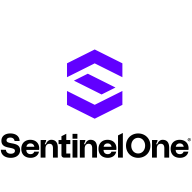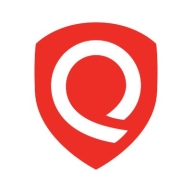


Microsoft Defender for Cloud and Qualys Enterprise TruRisk Platform compete in cloud security and risk management. While Microsoft offers strong pricing and support, Qualys is often deemed superior due to its comprehensive features, justifying its higher cost.
Features: Microsoft Defender for Cloud provides an integrated security solution with advanced threat protection, regulatory compliance tools, and seamless Azure integration. Qualys Enterprise TruRisk Platform stands out with robust vulnerability management, extensive cloud security options, and detailed security analytics.
Ease of Deployment and Customer Service: Microsoft Defender for Cloud allows quicker deployment within Microsoft environments with well-regarded customer service. Qualys Enterprise TruRisk Platform, though slightly more complex to set up initially, offers superior service support, valuable for those seeking tailored assistance.
Pricing and ROI: Microsoft Defender for Cloud is more cost-effective, especially for organizations using Microsoft services, offering a solid return on investment. Qualys Enterprise TruRisk Platform requires a higher initial setup cost but provides significant ROI through its extensive risk management functionalities, justifying the additional investment with enhanced security posture.
| Product | Market Share (%) |
|---|---|
| SentinelOne Singularity Cloud Security | 5.3% |
| Microsoft Defender for Cloud | 9.8% |
| Qualys Enterprise TruRisk Platform | 0.4% |
| Other | 84.5% |

| Company Size | Count |
|---|---|
| Small Business | 47 |
| Midsize Enterprise | 20 |
| Large Enterprise | 53 |
| Company Size | Count |
|---|---|
| Small Business | 27 |
| Midsize Enterprise | 10 |
| Large Enterprise | 49 |
SentinelOne Singularity Cloud Security offers a streamlined approach to cloud security with intuitive operation and strong integration capabilities for heightened threat detection and remediation efficiency.
Singularity Cloud Security stands out for its real-time detection and response, effectively minimizing detection and remediation timelines. Its automated remediation integrates smoothly with third-party tools enhancing operational efficiency. The comprehensive console ensures visibility and support for forensic investigations. Seamless platform integration and robust support for innovation are notable advantages. Areas for development include improved search functionality, affordability, better firewall capabilities for remote users, stable agents, comprehensive reporting, and efficient third-party integrations. Clarity in the interface, responsive support, and real-time alerting need enhancement, with a call for more automation and customization. Better scalability and cost-effective integration without compromising capabilities are desired.
What are SentinelOne Singularity Cloud Security's standout features?SentinelOne Singularity Cloud Security is deployed in industries needing robust cloud security posture management, endpoint protection, and threat hunting. Utilized frequently across AWS and Azure, it assists in monitoring, threat detection, and maintaining compliance in diverse environments while providing real-time alerts and recommendations for proactive threat management.
Microsoft Defender for Cloud is a comprehensive security solution that provides advanced threat protection for cloud workloads. It offers real-time visibility into the security posture of cloud environments, enabling organizations to quickly identify and respond to potential threats. With its advanced machine learning capabilities, Microsoft Defender for Cloud can detect and block sophisticated attacks, including zero-day exploits and fileless malware.
The solution also provides automated remediation capabilities, allowing security teams to quickly and easily respond to security incidents. With Microsoft Defender for Cloud, organizations can ensure the security and compliance of their cloud workloads, while reducing the burden on their security teams.
We monitor all Cloud-Native Application Protection Platforms (CNAPP) reviews to prevent fraudulent reviews and keep review quality high. We do not post reviews by company employees or direct competitors. We validate each review for authenticity via cross-reference with LinkedIn, and personal follow-up with the reviewer when necessary.